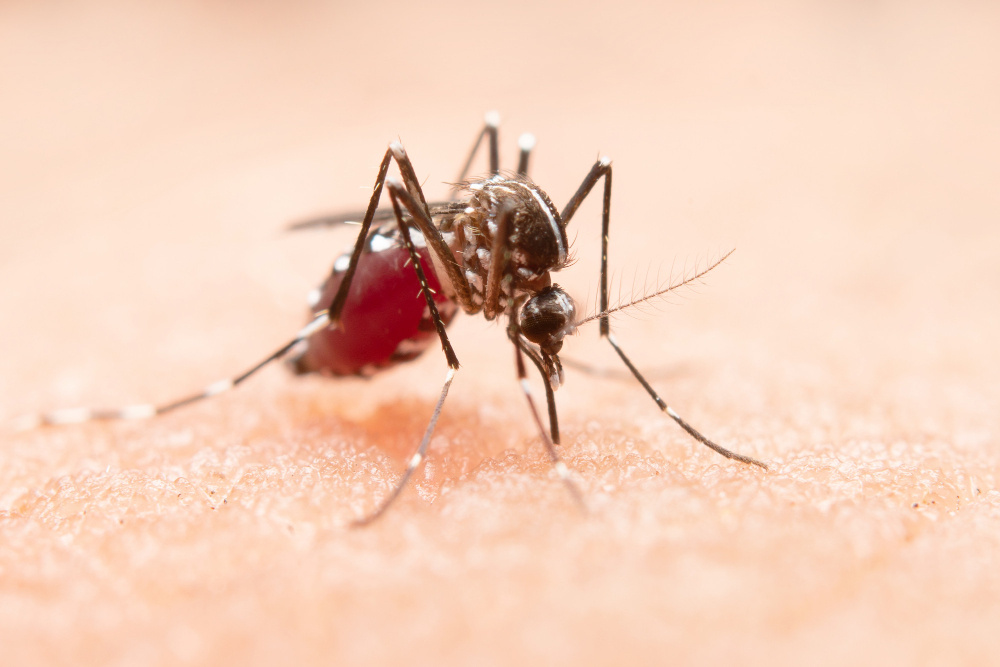
Chikungunya Virus China Outbreak 2025
The chikungunya virus China outbreak has emerged as a significant public health concern in 2025, with over 7,000 confirmed cases reported in Guangdong province alone. This mosquito-borne disease outbreak represents the largest chikungunya surge China has experienced since the virus was first identified in the country in 2008, prompting health officials to implement comprehensive response measures and raising awareness about vector-borne diseases in the region.
Current Outbreak Statistics: Over 7,000 confirmed cases in Guangdong Province | Epicenter: Foshan City | Timeline: June – August 2025
Understanding the Chikungunya Virus China Outbreak
The current chikungunya virus China outbreak centers primarily in Foshan city, located in Guangdong province just north of Hong Kong. Health authorities have confirmed that this outbreak began in late June 2025 and has since spread throughout the southern Chinese region, marking a concerning escalation in mosquito-borne disease transmission.
Chinese health officials have responded swiftly to contain the outbreak, designating dozens of hospitals as specialized treatment centers and implementing extensive mosquito control measures across affected areas. The outbreak has prompted international attention, with the U.S. Centers for Disease Control and Prevention issuing travel warnings for the region.
Geographic Impact and Spread Patterns
The outbreak’s concentration in Guangdong province is particularly significant due to the region’s subtropical climate, which provides ideal conditions for Aedes aegypti and Aedes albopictus mosquitoes – the primary vectors responsible for chikungunya transmission. These environmental factors, combined with high population density in urban centers like Foshan, have facilitated rapid disease spread.

What is Chikungunya Virus?
Chikungunya is a viral disease transmitted to humans through the bites of infected Aedes mosquitoes. The name “chikungunya” derives from a Kimakonde word meaning “to become contorted,” referring to the characteristic joint pain and muscle cramps that cause patients to assume hunched postures.
Key Characteristics of Chikungunya Virus
- Transmission method: Mosquito-borne through Aedes aegypti and Aedes albopictus
- Incubation period: 3-7 days after mosquito bite
- Primary symptoms: High fever, severe joint pain, muscle pain, headache
- Geographic distribution: Tropical and subtropical regions worldwide
- Treatment approach: Supportive care focused on symptom management
Symptoms and Clinical Presentation
The chikungunya virus China outbreak has demonstrated typical symptom patterns consistent with global cases. Understanding these symptoms is crucial for early detection and appropriate medical care.
Primary Symptoms
- Sudden onset high fever: Often reaching 102-104°F (39-40°C)
- Severe joint pain: Particularly affecting hands, feet, knees, and ankles
- Muscle pain and weakness: Widespread myalgia affecting daily activities
- Headache and fatigue: Persistent and debilitating
- Skin manifestations: Rash appearing 3-5 days after fever onset
Secondary and Chronic Symptoms
While most patients recover within a few weeks, some individuals may experience prolonged symptoms lasting months or even years. These chronic manifestations include:
- Persistent joint pain and stiffness
- Intermittent episodes of joint swelling
- Chronic fatigue and weakness
- Depression and mood changes related to chronic pain
Important Note: While chikungunya is rarely fatal, the joint pain can be extremely debilitating and may persist for months. Patients in the current China outbreak have been hospitalized primarily for supportive care and pain management.
Public Health Response to the Chikungunya Virus China Outbreak
Chinese health authorities have implemented a comprehensive response strategy to address the chikungunya virus China outbreak, focusing on both immediate patient care and long-term disease prevention.
Healthcare System Mobilization
The response to the outbreak has involved significant healthcare resource allocation:
- Designation of dozens of hospitals as specialized treatment centers
- Implementation of mosquito-proof measures in healthcare facilities
- Deployment of medical teams to affected areas
- Enhanced surveillance and reporting systems
- Public health education campaigns
Vector Control Measures
Extensive mosquito control efforts have been implemented across Guangdong province, including:
- Larvicide applications: Targeting mosquito breeding sites in standing water
- Adult mosquito control: Fogging and spraying in affected neighborhoods
- Source reduction: Eliminating standing water containers and improving drainage
- Community education: Teaching residents about mosquito prevention methods
Prevention Strategies and Personal Protection
Preventing chikungunya infection requires a multi-faceted approach focusing on mosquito bite prevention and environmental management. These strategies are particularly important for residents in and travelers to areas affected by the chikungunya virus China outbreak.
Personal Protective Measures
Individuals can significantly reduce their risk of chikungunya infection by implementing the following protective measures:
- Use EPA-approved insect repellents: Products containing DEET, picaridin, or oil of lemon eucalyptus
- Wear protective clothing: Long-sleeved shirts and long pants, especially during dawn and dusk
- Sleep under mosquito nets: Particularly important in endemic areas
- Use air conditioning: Keep windows and doors closed when possible
- Apply repellent correctly: Follow manufacturer instructions for safe and effective use
Environmental Control Methods
Community-wide prevention efforts focus on eliminating mosquito breeding sites:
- Water container management: Empty, clean, or cover containers that hold water
- Improve drainage systems: Prevent water accumulation in urban areas
- Maintain swimming pools: Proper chlorination and circulation
- Clean gutters and drains: Regular maintenance to prevent standing water
- Community cleanup campaigns: Remove debris that can collect rainwater
Treatment and Medical Management
Currently, there is no specific antiviral treatment for chikungunya virus. Medical management of patients in the chikungunya virus China outbreak focuses on supportive care and symptom relief.
Standard Treatment Protocols
Healthcare providers treating chikungunya patients typically employ the following approaches:
- Pain management: NSAIDs and acetaminophen for joint pain and fever
- Hydration support: Maintaining adequate fluid balance
- Rest and physical therapy: Gradual return to activity as symptoms improve
- Symptomatic treatment: Addressing specific symptoms as they arise
Medical Alert: Aspirin should be avoided in chikungunya patients due to the risk of bleeding complications. Always consult healthcare providers for appropriate pain management strategies.
Global Context and Climate Change Implications
The chikungunya virus China outbreak occurs within a broader context of expanding vector-borne disease transmission globally. Climate change has created more favorable conditions for Aedes mosquitoes to establish populations in previously unsuitable regions.
Climate Factors Influencing Spread
Several environmental changes contribute to the expansion of chikungunya transmission:
- Rising temperatures extending mosquito breeding seasons
- Increased precipitation creating more breeding sites
- Urban heat islands providing year-round mosquito habitats
- International travel facilitating virus importation
Travel Considerations and International Response
The chikungunya virus China outbreak has prompted international health organizations to issue travel advisories and recommendations for individuals planning to visit affected regions.
CDC Travel Recommendations
The U.S. Centers for Disease Control and Prevention has issued Level 2 travel notices, recommending that travelers:
- Practice enhanced precautions when visiting Guangdong province
- Use effective insect repellent consistently
- Wear appropriate protective clothing
- Seek medical attention if symptoms develop
- Consider postponing travel if at high risk for severe complications
Frequently Asked Questions About the Chikungunya Virus China Outbreak
Q: How serious is the current chikungunya virus China outbreak?
A: While the outbreak has affected over 7,000 people, health authorities report that most cases are mild with no severe illnesses or deaths reported. However, the scale represents China’s largest chikungunya outbreak since 2008.
Q: Can chikungunya be transmitted from person to person?
A: No, chikungunya is not transmitted directly between people. The virus requires mosquito vectors for transmission, though rare cases of mother-to-child transmission during delivery have been reported.
Q: Is there a vaccine for chikungunya?
A: Currently, there is no widely available vaccine for chikungunya, though research is ongoing. Prevention focuses on mosquito control and personal protective measures.
Q: How long do chikungunya symptoms last?
A: Most people recover within a few weeks, but joint pain can persist for months or even years in some cases. The acute phase typically lasts 3-10 days.
Q: Should I cancel my travel plans to China due to this outbreak?
A: The CDC recommends enhanced precautions rather than travel cancellation. Consult with healthcare providers about personal risk factors and take appropriate mosquito prevention measures.
Future Outlook and Surveillance
The chikungunya virus China outbreak highlights the need for enhanced surveillance systems and preparedness for vector-borne disease emergence. As climate change continues to expand suitable habitats for disease-carrying mosquitoes, public health systems must adapt to address these evolving challenges.
Ongoing monitoring of the outbreak will provide valuable insights into disease patterns, treatment effectiveness, and prevention strategy success. The experience gained from managing this outbreak will inform future responses to similar public health emergencies and contribute to global understanding of chikungunya epidemiology.
Stay Informed: Continue monitoring official health advisories from the CDC, WHO, and Chinese health authorities for the latest information on the chikungunya virus China outbreak and travel recommendations.
Conclusion
The chikungunya virus China outbreak of 2025 represents a significant public health challenge that requires coordinated response efforts, effective prevention strategies, and continued vigilance. While the outbreak has affected thousands of individuals in Guangdong province, swift action by health authorities and comprehensive control measures offer hope for containment and prevention of future occurrences.
Understanding the symptoms, transmission methods, and prevention strategies associated with chikungunya virus is essential for both healthcare providers and the general public. As we continue to face the challenges of emerging infectious diseases in a changing climate, the lessons learned from this outbreak will prove invaluable in protecting public health and preventing similar crises in the future.
By staying informed about the chikungunya virus China outbreak and implementing appropriate protective measures, individuals can contribute to broader public health efforts while protecting themselves and their communities from this debilitating mosquito-borne disease.













